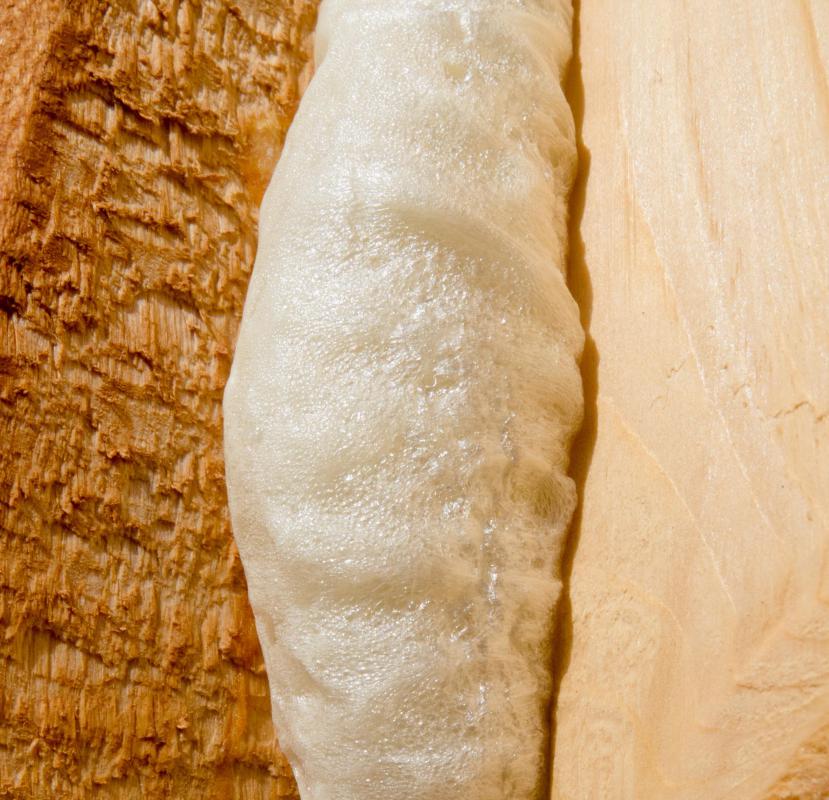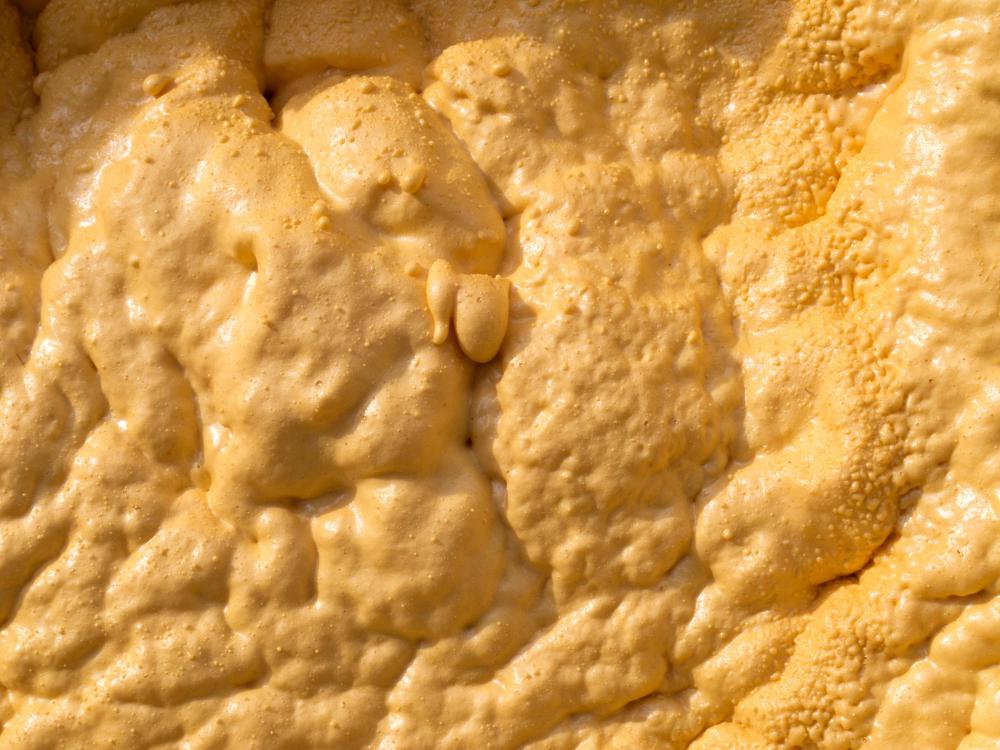At HomeQuestionsAnswered, we're committed to delivering accurate, trustworthy information. Our expert-authored content is rigorously fact-checked and sourced from credible authorities. Discover how we uphold the highest standards in providing you with reliable knowledge.
What is Foam Insulation?
Foam insulation is a type of insulation that is sprayed onto walls or into small, difficult to reach places. Although it is more expensive than polystyrene and fiberglass insulation, which is installed in sheets or blocks, it is more effective in places like attics, where there may be unfinished walls or ceilings. Good, solid home insulation is crucial for reducing heating and cooling bills, and preventing damage from moisture and vermin.
Polyurethane foam insulation is mixed with water, then sprayed under pressure from a pneumatic pump. As it mixes with oxygen from the air and the water dries, the foam expands, then hardens and cures within a few minutes. The volume of dry spray foam is five to ten times greater than that of wet spray foam. Spray foam is also self-adhering. This makes it possible to spray it under a floor without taking up the floor first, and it is much easier to apply to ceilings than sheets of insulation that must be glued or stapled into place.

Polystyrene and fiberglass insulation cover small holes, but they do not seal them. Spray foam insulation expands to fill up crevices, and it can be applied to places other types of insulation can’t reach. The foam prevents not only the entry of hot and cold air, but also insects, rodents and other vermin, and water. Spray insulation is used in new houses as they are being built, but it can also be used in existing buildings to insulate places the old fiberglass insulation cannot reach, or in crevices that have developed as the structure settled.

Unlike polystyrene or fiberglass insulation, spray foam insulation is both airtight and watertight. Because it expands to completely the fill the place where it was sprayed, it creates an airtight seal that prevents air from coming in or out. Hot air cannot mix with cold air and create condensation inside the walls, which stops the buildup of moisture that can eventually cause walls to rot.

Spray foam insulation is generally used in conjunction with fiberglass or polystyrene home insulation. It must be applied by a professional for large-scale jobs, because if too much is used, it can crack walls or crush pipes, and an inexperienced user may end up with foam insulation bulging out in unwanted places. Kits are available for DIY jobs, however, to make small repairs around the home.
AS FEATURED ON:
AS FEATURED ON:















Discussion Comments
I have been searching the Absorber Coefficient in Octaves Chart for spray polyurethane foam in thicknesses of 2, 6 and 8 inches(5.08, 15.24 and 20.32 centimeters respectively!) and found nothing. All I found is a chart for spray polyurethane, but the thickness is lower than I need to know.
I need this Chart (Absorption vs Frequency curve) in order to add to the ease acoustic simulation software material database for a better simulation in a study of acoustics in a very large room with this material applied inside the roof.
I am talking about the polyurethane with its auto skinning product(this was taken off, sanded and cut) with 45 to 55 Kg/m3 of density.
Where can I find this chart?
Post your comments